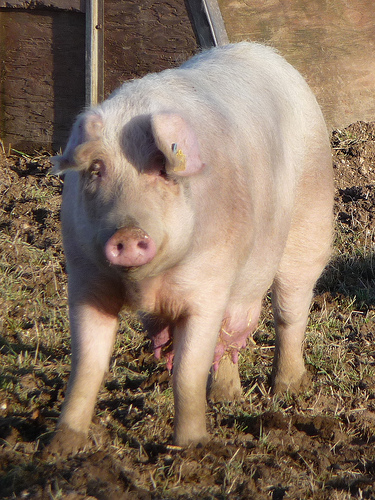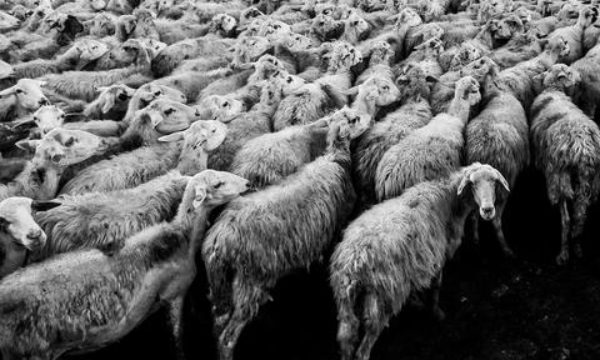There is a lot of evidence to suggest that giving animals a better environment makes them less stressed, less likely to behave abnormally, and sometimes more productive. However, most of that evidence comes from small-scale trials, and scaling improvements up to the practicalities of large farms could prove costly and burdensome. Is it environmental enrichment a realistic option for farmers?
 In an article in CAB Reviews, Laura Dixon of the Scottish Agriculture College looks at the practicalities and how environments can be improved. She says that the main approaches are through providing foraging opportunities, structural complexity, sensory stimulation or novelty, and social stimulation from other animals or humans. The type of enrichment that helps differs from animal to animal – poultry benefit from perches, while ducks prefer water troughs. Allowing birds to forage or to use water troughs and dust baths has been shown to reduce abnormal behaviour, and often leads to better growth. However, the “wilder” environment can be difficult to clean and need more maintenance, with more risk of disease.
In an article in CAB Reviews, Laura Dixon of the Scottish Agriculture College looks at the practicalities and how environments can be improved. She says that the main approaches are through providing foraging opportunities, structural complexity, sensory stimulation or novelty, and social stimulation from other animals or humans. The type of enrichment that helps differs from animal to animal – poultry benefit from perches, while ducks prefer water troughs. Allowing birds to forage or to use water troughs and dust baths has been shown to reduce abnormal behaviour, and often leads to better growth. However, the “wilder” environment can be difficult to clean and need more maintenance, with more risk of disease.
Many “toys” have been developed for pigs, including suspended chains, rope, metal pipe, rubber hose and even a kind of football, which encourage them to explore and forage. They also benefit from human socialisation. The toys may be difficult to clean and it might prove too time-consuming to talk to and stroke pigs on a large commercial farm. However, the evidence suggests that on balance, the benefits outweigh the costs. The review also considers the options for cattle, mink, foxes and rabbits. For some animals, such as cattle, there are tradeoffs in choosing to house animals together, with lower fear and stress response but more aggression between animals.
Key to providing effective enrichments is working out what the animals actually want, and will invest time and energy in trying to obtain, as these types of changes are most likely to yield the biggest benefit in improved welfare.
In the EU there are increasing welfare requirements for poultry and pigs, and these may help to drive more efficient enrichment practices and commercial benefits, as well as improving animal welfare. There may well be possibilities to extend enrichment and welfare further through branded schemes that reflect consumer concerns, such as the preference for free-range eggs. There is a need for larger-scale studies that can assess the balance of benefit and risk for particular animals, so policy-makers and farmers can focus on the best options.
“Environmental enrichment and practical applications for welfare in production agriculture” by L.M. Dixon appears in CAB Reviews, CAB 2012 7, No. 033.
Related News & Blogs
Tourism and animal welfare: a 21st century dilemma
Tourists encounter animals in many different situations: photo opportunities, street performances, animal rides and specialised ‘sanctuaries’ such as elephant homes and tiger temples. Tourism may benefit wildlife, by funding wildlife animal conservation, as well as providing vital income for local communities, but the exploitation of animals in animal entertainment can be a cruel and degrading experience for intelligent sentient creatures.
13 February 2019


